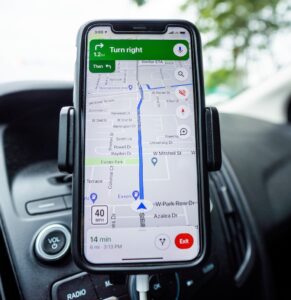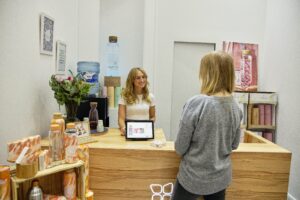So you got everything ready, the website is up and running, your social media profiles are set, you have your booking calendar waiting to be filled… now all you need are the clients.
For many local businesses advertising is thought of as one of those expensive but necessary things that you just have to do. Just bite the bullet, so the thought process goes, because what choice do you have?
Whether you choose a professional marketer or opt to do it yourself, you will have some basic choices to consider – like where to advertise. Gone are the days of Newspapers and Yellow Pages, which should make the process a bit less of a shot in the dark. For many, the natural choice is Facebook and Instagram. After all, Facebook doesn’t stop reminding us of how many people we can reach with just $5/day. Or maybe we don’t feel like we have many other options.
You don’t need me to tell you that Facebook has a way of being manipulative; their whole business model has been built on profiting off our vulnerability, and this rings extra true for new advertisers. While you wait for your phone to ring, apparently a billion people could see your ad. Okay, I’m exaggerating, but the metrics Facebook dangles sure do look promising. Just think about all those views, and clicks, and the endless streams of appointments that just don’t stop.
Most local business owners are way too busy to spend time learning how to properly use Facebook’s Ad Manager. And Facebook doesn’t exactly make it clear that to deploy effective ads you need a sophisticated A/B testing strategy and complex targeting optimization techniques…oh, and as an initial budget at least 10x more than $5/day.
Let me geek out a little bit by telling you the reason. Facebook’s computer models (algorithm) can only determine the behavior of your audience by having a sufficiently large sample size (at a minimum of 10,000 people) and by learning their behavioral response to your ad over enough time (between 2-4 weeks). But that audience may not be the most relevant so you need to test those 10,000 people against a different audience. And in the initial phase of a campaign, you probably need to test 10 different audiences for about a month to determine which is best. That makes $5 for 10 audiences per day. So you’ll be paying $1500 for the first month to determine the most successful audience.
To take an example, suppose a yoga studio targeted ten audiences as follows:
- All People interested in yoga within 5 miles of my business
- All Women Interested in Yoga within 10 miles of my business
- All People interested in yoga ages 30-40 within 10 miles of my business
- All women interested in yoga ages 30-40 within 20 miles of my business
- All People interested in Fitness within 5 miles of my business
- All Women Interested in Fitness within 10 miles of my business
- All People interested in Fitness ages 30-40 within 10 miles of my business
- All women interested in Fitness ages 30-40 within 20 miles of my business
- All Women Within 1 mile
- All Women ages 30-40 within 1 mile
Okay, you may be thinking $1500 doesn’t seem like such a bad use of ad budget if it serves as a useful experiment to determine your audience. But just because you determined the best audience doesn’t mean it will still cover the cost. You need to take your best audience and throw your full monthly ad budget at them for another learning phase and see the response. If you can generate sufficient conversions then Facebook may work for you.
But….and a big BUT
All of the above assumes you are using Facebook with the utmost expertise and that you are not wasting your budget because you mistakenly ticked one confusing option in Facebook’s complicated ad manager system.
What’s more likely is that you’ll need to hire a professional who knows what they’re doing. The expense of a pro will at least double your budget. And even if you do get an ad pro with a proven track record, they will likely tell you that advertising is never guaranteed – hopefully, they will make that abundantly clear before you sign a long contract.
Another downside to Facebook Ads
The thing about Facebook ads is that you’re basically inundating people with information they most likely don’t want to see. Such ads only work if you happen to get the right person at the right time with the perfect design and motivational text. There’s just so much working against you that makes the whole process very risky for any local business. Even if you set aside a big marketing budget, it is very unlikely that it will pay off. I’m not saying Facebook can’t work for your business, but it’s more effective for brands that sell products or national brands – not local.
Unfortunately for many local businesses, it takes a while before they realize that their ads are not bringing in clients. And what makes it worse is that every dollar spent on unsuccessful ads is basically flushed down the toilet. Ads are completely unlike dollars spent on content marketing that benefits you for many years and continues to gain value as time passes.
Another Caution about Facebook – Its Terms of Use Penalizes Wellness Businesses
Wellness businesses are often cutting-edge and are attuned to modalities that sometimes go against mainstream health. Facebook can and does arbitrarily ban wellness brands from advertising and even shuts down their pages at the drop of a dime. You can have the most optimized campaign in the world and find that all your designs, copy, and audiences are lost without any clear reason or explanation. There are thousands of horror stories where simply using a term that Facebook deems as offensive or against their terms can jeopardize your whole business.
Are There Better Options for Advertising?
For local businesses serving their community, there are many productive ways to cultivate a steady stream of clients to fill your schedule. If you want to advertise and get people to see your offer right away, the best strategy is to buy ads on Google for your specific keywords and in your specific area. Like Facebook, you will need to keep a very close eye on the traffic and ensure that you aren’t wasting money because of some mistake in how you set things up. You will also need to make sure your text is super motivating and on message. But what’s most important is the page that you lead people to should be your website -not some stupid template landing page or an off-the-shelf squeeze page. Those are gimmicks for other brands – not local wellness brands.
Local wellness brands are community leaders that people want to build a relationship with. The website we direct people to must be our biggest marketing asset, rich with valuable information, and easy to navigate. Ultimately, when you tell the full story of what you offer on your website, it has the potential to draw thousands of organic visitors searching for exactly what you do and ready to book your services.






